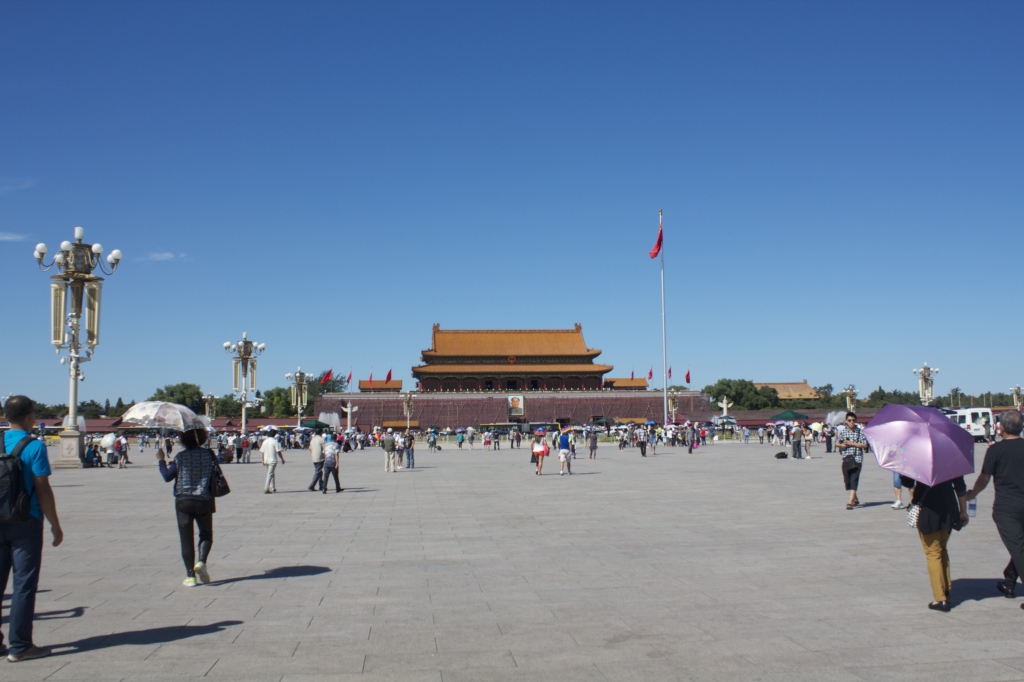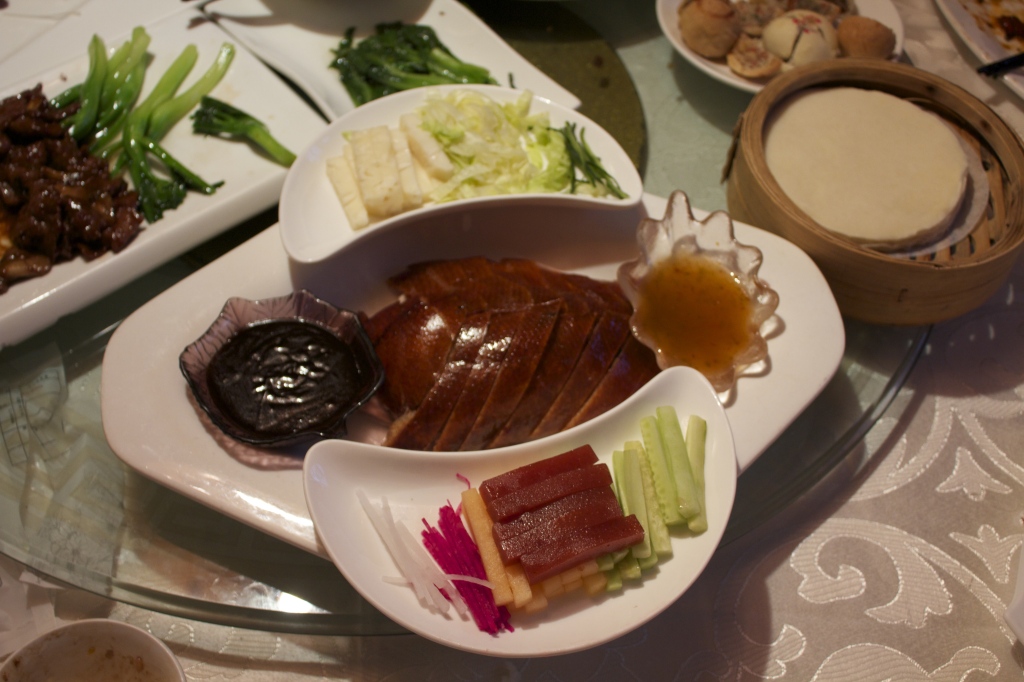We had a full day today in the Chinese capital. Our first stop: Tsinghua University, where we met with Professor Fu Zhiyong at the Academy of Art & Design (清華大學美術學院). The Academy building houses programs in everything from graphic art to industrial design, and includes studio space for artists, media labs, and the classroom for our workshop.
For today at least, the sky was blue beyond belief—a true rarity in this city. The sky above Beijing is usually a murky grey, but you couldn’t tell it by the swirls of white clouds against the cerulean backdrop overhead. (As Deland put it, “It’s deceptively nice out.”) It seems we brought the Californian sunshine with us, lending the day a pleasant, golden sheen.
The Forbidden City (紫禁城)
After a quick lunch of noodles, we traveled by bus to the heart of Beijing: Tiananmen Square and the Forbidden City. We walked through the massive plaza, where tourists (Chinese and foreign) intermingle with uniformed guards and plainclothes policemen. The role of the public square as a political symbol was clear. “Do people dance on the square?” one student asked. “No, they do not!” the tour guide hastily replied.
While iconic public spaces in other societies are open to, well, the public, as a place for gathering, picnicking, rallying, playing frisbee—there is much less room here for spontaneity. If anything happens in Tiananmen, it will be highly choreographed, such as the military parades that happen once a decade. The same trend was at work with the National People’s Congress, the building on the left. As our tour guide noted: in China, if anything has the word “People’s” in it, it’s probably a government organ and means that “people” are restricted from going there.

The underpasses that connect Tiananmen to the surrounding streets had been sanitized. I have memories of them filled with vendors selling all manner of trinkets, but the passages have been scrubbed of commerce. Aside from the tourists, the only other people down there were guards waving us along to keep traffic flowing.
The red walls and yellow-tiled roofs of the Forbidden City similarly reflected the imperial palace as a projection of power. We passed through a series of gates, each opening up to impressive panoramic views of brick-and-marble courtyards littered with mythological creatures. The complex had to serve not only as the emperor’s workplace, but also as his home, and the rear private portion of the palace was constructed on a more intimate scale.


Duck for Dinner
Our dinner was eaten with aggressively-hawked artisan chopsticks. Alice suggested we look on Tao Bao (the Chinese version of eBay) if we wanted to purchase them as souvenirs, instead of buying them at the restaurant. Tao Bao is part of the Alibaba group where Alice interned at this summer, and the company could soon have a record-setting IPO.

The meal wrapped up with Peking duck, accompanied by melon, haw fruit, and pineapple slices. Forgive the constant mention of food—we believe that a full stomach and happy taste buds are vital to learning. Stay tuned, as our adventures, urban and culinary, will continue with the official kick-off of the joint workshop tomorrow.

